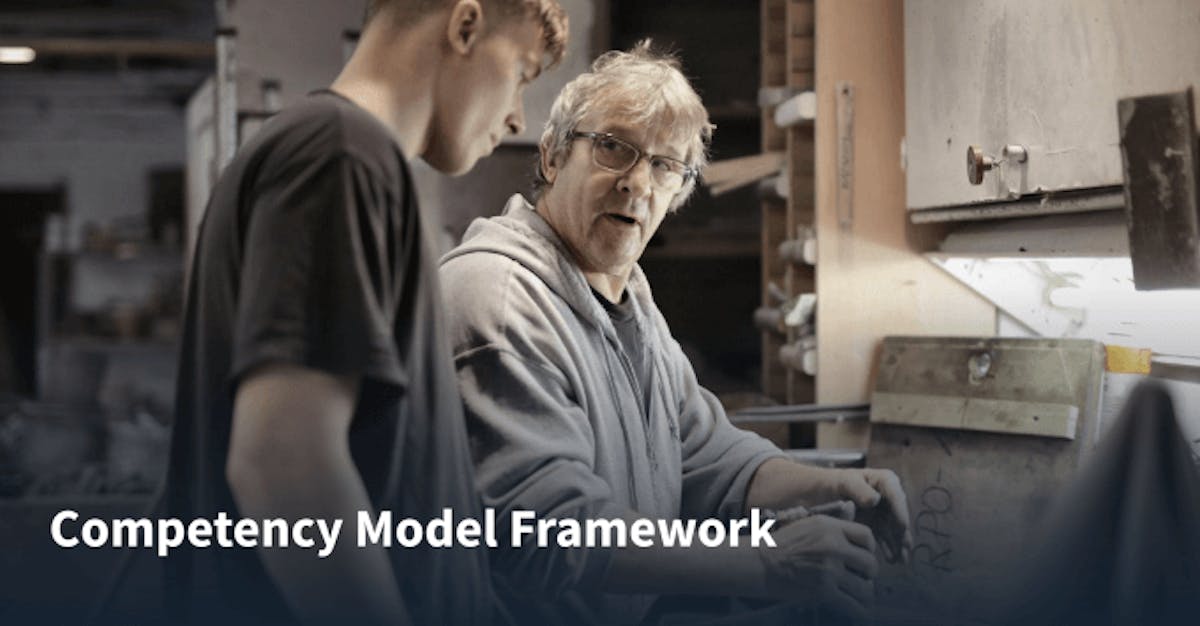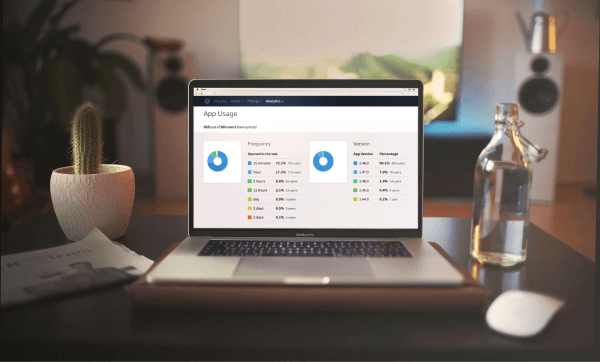Competency Model Framework

There are industry-standard benchmarks or performance levels that the people in your organization need to meet. Do they? How can you find out? And if they don’t, how can you fix the situation? One powerful method is the competency model framework.
What is a competency model framework?
Simply put, it is a way of thinking about training and employee development. The UNESCO-UNEVOC International Center for Technical and Vocational Education and Training describes a competency model framework as having these main characteristics:
(I) Can-do benchmarks that allow movement from one training module to the next. In other words, your learners need to show that they can perform the required tasks in order to move on to the next stage. These benchmarks are called “learning outcomes” which are based on industry-specific standards.
(II) Since the focus is on what the trainee can actually do, there is flexibility about the inner timeframe. Another way to put this is that moving from one training module to the next is based on competency and not time. Obviously, a 6-month learning program should be completed by the end of the 6 months. However, within that time frame, how long it takes each learner to be competent at a learning outcome is flexible. One learner may reach competency in Learning Outcome 1 after one week whereas another learner may take a few days longer or shorter. So, trainees do not move as a class, per se, but on an individual basis within a larger, set time period.
Implementing a competency model framework
The recent article, “Competency-based training model for human resource management and development in [the] public sector” by Prabawati et.al. discusses a 5-strategy, implementation competency framework model. On paper, the tasks have a sequence. In reality, however, there may be some “back and forth” in order to get things done correctly.

Organizational scanning
Use methods such as a SWOT analysis to assess the competency training needs of the organization. Emphasis is on what needs to be done and how it will be monitored.
Strategic planning
How will the identified objectives from the scanning be achieved? Which managerial methodologies need to be used?
Competency profiling
This step involves choosing the industry-specific competencies you wish to work on: identifying what they are and assigning a required proficiency level for each one. Personalized learning needs should be employed to further the personal talent development of the employees.
This process is not always as straightforward as it may seem. The literature suggests that your organization’s learning and development may need to do a little digging to find the competencies which are most relevant. To do that, you may need to use methods such as surveys, focus groups, and interviews.
Competency gap analysis
Now, it is time to measure up. What is the proficiency gap between each industry-specific competency you chose and your organization’s actual level? Most likely, you will need to assess the proficiency of each employee at each chosen standard in order to get an accurate picture. True, estimating is easier. However, this will significantly lower the success of any competency model framework you put in place.
Competency development
During this stage, your organization creates the answer(s) to fill the gaps it has identified. One answer could be hiring additional employees whose proficiencies are at or beyond the required levels. This can be a cost-effective option in compliance situations for which the compliance deadline is much closer than the length of training required.
Having said that, effective organizational planning should mean that your company will have enough time to develop and carry out in-house competency training within any required time. Blended-learning, elearning, or online training can also be an option for your employee training. Thus, another answer to your proficiency needs is competency-based training.
Developing competency-based training
At first glance, it might look like a mountain of a task. Not really. The key is breaking down the process into highly do-able steps to improve the learning environment and your team’s learning experiences.
Step 1
Match each industry standard chosen to an expert in your organization. Your organization is up and running…and probably doing a great job. So, you already have people who are up to par in their proficiency. They can provide the knowledge and skills needed to get others where they need to be. You can think of them as mentors.
Step 2
Using your individual employee analyses from your competency gap analysis (above), make a learning outcome, learning objectives, and learning activities plan for each trainee for the ultimate professional learning experience. In other words, what does each person need to be able to do in order to be at the required competency level for each industry-specific standard chosen?
TOP TIP: A training manager should keep a spreadsheet of learning outcomes and employees. This will come in handy during the next step.
Step 3
Create training material for each learning outcome. Have your organization experts look at the training material your organization already has. Repurposing training material saves you time, budget, and frustration! Some train materials will be good as is. Others will need to be tweaked. In some cases, you will need to start from scratch.

The information in your Step 2 spreadsheet can help in several ways. For example, it lets you know how many people need each module. If there are only a few and there is no ready material, it may be most efficient and effective to schedule small group meetings with your organization expert. For training larger groups, you can more easily schedule practice and needs-assessment for social learning opportunities – especially when equipment is involved. Another example is the overall, visual insight into where your organizational gaps are. In “high demand” areas, you may need to assign another mentor or more assessors.
TOP TIP: Remember – each learning outcome is measurable by a can-do task. This might be a paper & pencil exam, but it usually isn’t.
Step 4
Modernize your competency-based training by using a mobile-friendly, learning management system (LMS) such as EdApp.
Why mobile? Moving to mobile-based training offers many advantages. Check out 6 of them here. Not sure what an LMS is? Not sure what benefits it can offer your organization? This article explains all.
A top-level LMS such as EdApp has special features to help your learners get proficient. One of these is Brain Boost, a spaced repetition tool that increases the retention of compliance training materials. Another is Rapid Refresh, an easy-to-use quiz maker: your spreadsheet of material (your job) is automatically converted into quizzes which are delivered at regular intervals (our job); includes analytics.

And speaking of analytics, our Actionable Reports feature keeps you updated with information about who is doing what (or isn’t) and gives you several options for reminding them of their training requirements.
Perhaps one of the best things about a quality LMS is that you don’t always have to do it by yourself.
Your LMS training course library has ready-to-use instructional modules with quality instructional design. Many of them may fit your needs as they are (just customize your branding). Many of them just need a few tweaks to the content (plus customizing your branding), and you are ready to roll. A few of them will need more serious revision. The good news is that these can serve as templates for your competency framework model module: simply copy/paste your content where it needs to go.
Step 5
Set reasonable deadlines for your competency-based training modules.
First, set an overall deadline, so that things do not drag on forever. Then, set expected module deadlines. This gives learners the flexibility to complete a bit faster or slower than expected but still keeps them on track to the end goal. Lastly, give each employee their learning program.
Competency-based training is part of a well-rounded training program
One of the major complaints about trainees is that they have the theory but not the practice. Working from a competency model framework greatly reduces this complaint. The performance-based assessments are actually what your learners need to do while “on the job”. In addition, focusing on learning outcomes (can-dos) clarifies your organizational (and industry) standards to your employees.
A criticism of competency model frameworks is that proficiency assessment is not always easy or accurate. From my experience as a teacher, I can tell you that you can improve your ability to assess proficiency. When I began, my assessments were quite long and not that accurate. Over time, they have become shorter and pinpoint proficiency much better. As a result, my learners tend to achieve higher competency levels in the relevant educational standards. It can work the same for your organization.
Author
